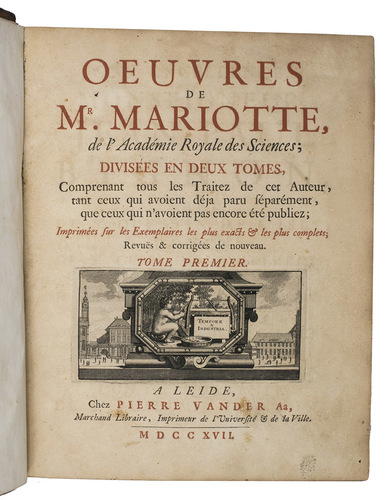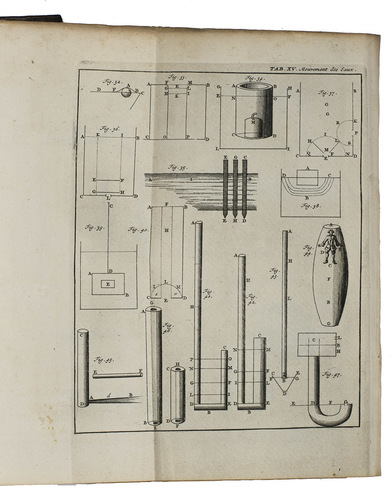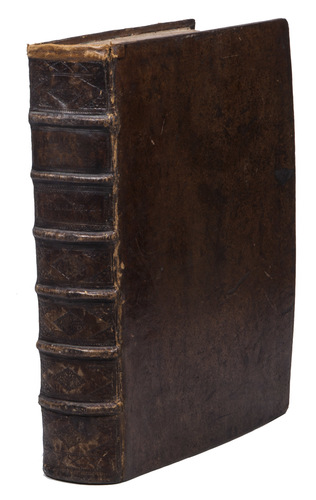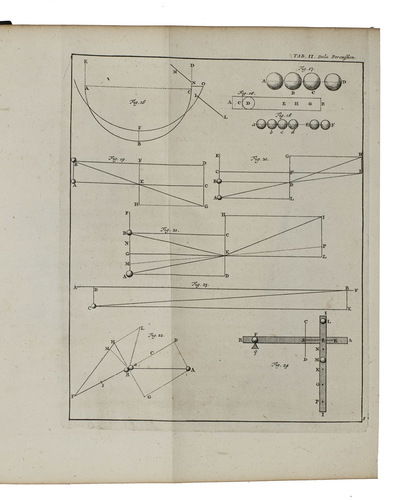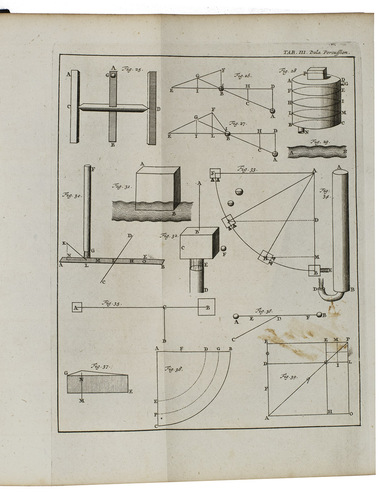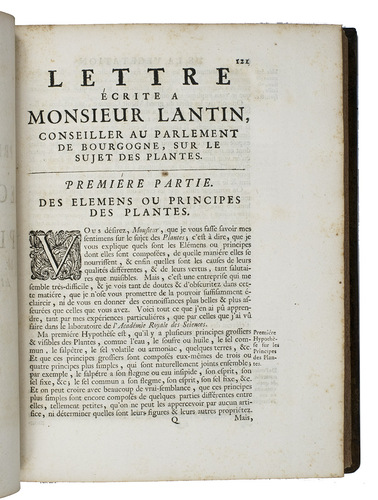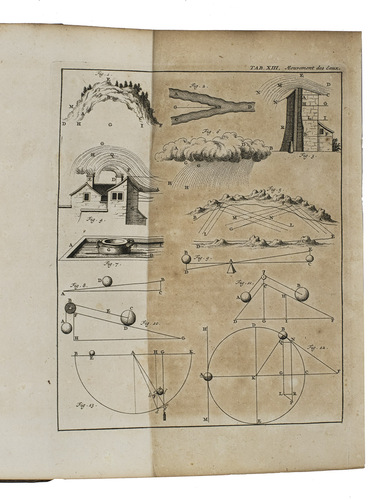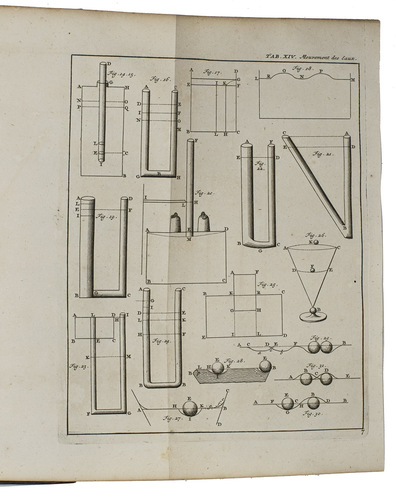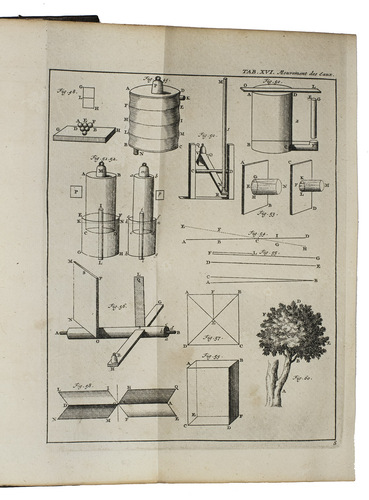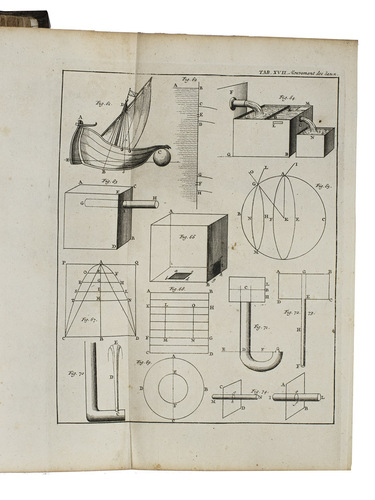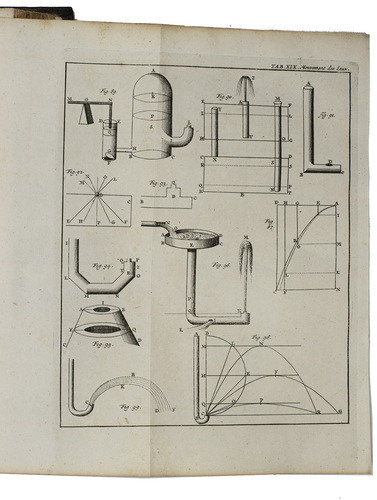MARIOTTE, Edme.
Ouvres de Mr. Mariotte, de l'Académie Royale des Sciences; divisees en deux tomes, comprenant tous les traitez de cet auteur, tant ceux qui avoient déja paru séparément, que ceux qui n'avoient pas encore été publiez; imprimées sur les exemplaires les plus exacts & les plus complets; revuës & corrigées de nouveau.
Leiden, Pieter van der Aa, 1717. 2 parts in 1 volume. 4to. Both title-pages in red and black with engraving, 26 folding plates and some small engravings in text. Contemporary sprinkled calf, [12], 701, [35] pp.
€ 3,500
First edition of the complete work of Edme Mariotte (ca. 1620-1684). "Honored as the man who introduced experimental physics into France. Mariotte played a central role in the work of the Paris Academy of Sciences from shortly after its formation in 1666 until his death in 1684. He became so indentified that there are no traces remained of his life outside of it and before joining it".(DSB IX).
The present work is divided in 13 parts. "As early as 1670 Mariotte had announced his intention to compose a major work on the impact of bodies. Completed and read to the Academy in 1671, it was published in 1673 as Traité de la percussion ou choc des corps, also the first part in present work, The first comprehensive treatment of the laws of inelastics and elastic impact and of their application to various physical problems, it long served as the standard work on the subject and went through three editions in Mariotte's lifetime.
The most important part in this work is De la Nature de l'Air, in which he focusses on the three main properties of air: it's weight, it's elasiticity and it's solubility in water. To show that air has weight, Mariotte point out the behavior of the mercury barometer and the common interpretation that the weight of the collumn of air standing on the reservoir. Turning to the elasticity of air, he presents a series of experiments in which air is trapped in the mercury tube before it is immersed in the reservoir, thus depressing the height at which the mercury settles. This last statement, further confirmed by experiments with a double-column barometer and extended to the expansion of air through experiments in a vacuum reciever, has gained Mariotte a share of Boyle's credit for the discovery and formulation of the volume-pressure law; indeed, it is called "Mariotte's law" in France" (DSB IX).
With some annotations in brown ink on the free endleaves. Binding shows slight signs of wear, the head of the spine has been restored, slight foxing and browning throughout. Otherwise in good condition. DSB IX, pp. 114-122; Nouv. biogr. Gén. 797-805.
Related Subjects:











